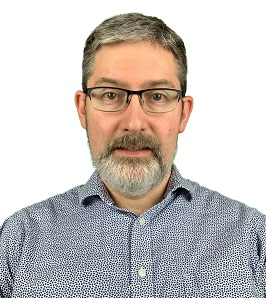Message from the Director
 Welcome to the website of the Biomedical Imaging Research Centre! You can also find us on Twitter @westernuBIRC and Facebook (Biomedical Imaging Research Centre).
Welcome to the website of the Biomedical Imaging Research Centre! You can also find us on Twitter @westernuBIRC and Facebook (Biomedical Imaging Research Centre).-
At Western University, especially in the departments of Medical Biophysics, Biomedical Engineering, Medical Imaging and at the Robarts Research Institute
-
At the London hospitals: St Joseph's Health Care London, London Health Sciences Centre , the Lawson Health Research Institute, the London Regional Cancer Center and Baines Imaging.
This means that our faculty, staff, students and residents are provided with access to and training on cutting edge Imaging infrastructure that is unparalleled in Canada. This ranges from an ultra high field human MRI scanner unique in Canada at the Robarts Research Institute, to Canada’s first PET/MRI hybrid imaging system at the Lawson Health Research Institute, to state-of-the-art vascular imaging systems at Robarts and Lawson, and to the preclinical ImPaKt Facility at Western. Recently, a suite of ultra-fast CT scanners were installed in the London hospitals and Robarts that enable seamless translation of imaging research and innovation to the clinic. The city has also started to rejuvenate the entire clinical MRI fleet bringing state-of-the art technology to service the health care region and allow close collaboration with research platforms.
BIRC has great interest in training the next generation of imaging researchers and supports programs and initiatives that turn our graduate students in biomedical imaging leaders and innovators. Many participate in multidisciplinary training programs, such as the Collaborative Graduate Specialization in Molecular Imaging, the Collaborative Graduate Specialization in Musculoskeletal Health Research, and the Graduate Programs in Neuroscience and Biomedical Engineering. BIRC also encourages our trainees` participation in the annual Imaging Network of Ontario conference, where students and faculty from Imaging communities across Ontario share their latest research advances.
Promoting equity, diversity and inclusion in London, Ontario`s imaging community is an important dossier of the center and our members get involved in local initiatives dedicated to empowering and supporting women in STEM across the city. BIRC continues to endorse the Dimensions EDI Charter, which aims to address obstacles faced by all those who identify as women, Indigenous people, racialized people, members of the LGBTQA2+ communities and people with disabilities at postsecondary institutions.
Our Strategic Plan, “BIRC: 2020 and Beyond”, will guide us as we now contemplate a center renewal.
Looking forward to the adventure,
Jean Théberge, Ph.D., FCCPM
Director, Biomedical Imaging Research Centre, Western University.Medical Physicist, Dept. of Medical Imaging, St. Joseph's Health Care London.
Associate Professor, Depts. Medical Imaging, Medical Biophysics and Psychiatry, Western University.
Scientist, NeuroPsychiatry Imaging Lab, Imaging Division, Lawson Health Research Institute.
